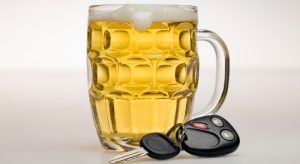Happy New Year, everyone.
A few months ago, I blogged about the continuing phenomenon of impaired driving, the fatalities resulting from crashes involving impaired drivers, and recommendations from experts about how to reduce the incidence of impaired driving. Some of the feedback I received indicated that talk of solutions ought to be preceded by common agreement on the nature of the problem.
Today’s post sets forth three impaired-driving-related principles borne out by research. Agreement about these basic precepts can support a more robust and productive policy-oriented debate about strategies to reduce impaired driving.
- Impaired driving is dangerous, and the risk of crash increases at higher levels of alcohol concentration.
Danger. A 2018 Consensus Study Report of the National Academies of Sciences, Engineering and Medicine listed the following as among the effects of alcohol:
- psychomotor impairment
- decreased inhibition
- diminished alertness and sleepiness
- confusion and problems with concentration; and
- reduced visual focus.
National Academies of Sciences, Engineering, and Medicine, Getting to Zero Alcohol-Impaired Driving Fatalities: A Comprehensive Approach to a Persistent Problem 10 (2018) [hereinafter National Academies].
The report noted that “[d]riving requires several complex skills, and alcohol affects the capacity to drive safely by impairing information processing and reaction time and compromising judgment and coordination.” Id.
Crash risk. Researchers have estimated the relative crash risk based on a driver’s blood alcohol concentration. One widely cited study of drivers in Long Beach, California and Fort Lauderdale, Florida determined that a driver with a blood alcohol concentration (BAC) of 0.08 has nearly three times the relative risk of crash as a driver with a BAC of 0.00. Richard D. Blomberg et al, The Long Beach/Fort Lauderdale relative risk study, 40 Journal of Safety Research 285 (2009). The study found that the crash risk increases exponentially at BACs of .15 and higher. A driver with an alcohol concentration of .15 has nearly 20 times the risk of crash, while a driver with a BAC of 0.20 has 80 times the risk.
Fortunately, the baseline rate of motor vehicle crashes per 100 vehicle miles traveled is relatively low, and most incidents of driving while impaired do not result in a collision. Compare Amy Jewett et al, Centers for Disease Control and Prevention, Alcohol-Impaired Driving Among Adults – United States, 2012, 64(30) MMWR Mob Mortal Wkly Rep. 2015 (estimating 121 million episodes of impaired driving annually) with NHTSA, National Center for Statistics and Analysis, Summary of motor vehicle crashes; 2016 data 2 (September 2018) (reporting 7,277,000 police-reported crashes in 2016). And not every collision causes injury or death. Instead, these are merely potential outcomes. National Academies at 6.
Crashes. When alcohol-impaired crashes do occur, they are estimated to cost tens of billions of dollars in lost productivity, workplace losses, legal and court expenses, medical costs, emergency medical services, insurance administration, congestion, and property damage. NHTSA, National Center for Statistics and Analysis, Traffic Safety Facts: 2018 Data, Alcohol Impaired Driving 3 (December 2019) [hereinafter NHTSA]. The North Carolina Division of Motor Vehicles reported in 2018 that there were 11,345 alcohol-involved crashes. Those crashes resulted in injuries to 7,602 persons and in the deaths of 411 others. North Carolina Division of Motor Vehicles, North Carolina 2018 Traffic Crash Facts 4.
Fatalities. Alcohol-impaired driving is involved in more traffic deaths nationally than any other driving behavior identified and isolated by researchers. NHTSA at 8. In 2018, 29 percent of all fatal traffic crashes in the United States involved an alcohol-impaired driver. Id. In contrast, 26 percent of fatalities nationwide were speeding-related. Id. at 9.
The large majority of drivers in fatal crashes have BAC levels far higher than the per se impairment level in North Carolina and nearly every other state of 0.08. In 2018, 67 percent of alcohol-impaired-driving fatalities were in crashes in which at least one driver had a BAC of .15 or higher. Id. at 7. The most frequently recorded BACs among drinking drivers in fatal crashes in 2018 was .16. Id.
Despite anecdotal reports of impaired drivers walking away from crashes without injury, the persons most often killed in crashes involving alcohol-impaired drivers are the impaired drivers themselves. Id. at 2 (reporting that of the 10,511 people who died in alcohol-impaired-driving crashes in 2018, there were 6,364 drivers (61 percent) who had BACs of .08 or higher). That’s not to minimize the impact on others. Passengers riding with alcohol-impaired drivers (some of whom were children) comprised 13 percent of fatalities, occupants of other vehicles 15 percent, and nonoccupants (including pedestrians and bicyclists) 11 percent of fatalities in crashes involving at least one alcohol impaired driver. Id. at 2-3.
- Impairment from alcohol is still the primary problem – not drugs.
Drug-impaired driving has been a recent focus of research and policy making. Though drugged-driving data is not always gathered and, even when it is, is subject to significant limitations, experts believe that alcohol impairment comprises the larger portion of the impaired driving problem. Survey data from 2014 showed that the “prevalence of driving under the influence of alcohol was higher than the prevalence of driving under the influence of illicit drugs by twofold, and a high proportion of those driving under the influence of drugs were concurrently under the influence of alcohol.” National Academies, at 78.
In some ways, that is good news for a system already geared toward combatting impairment by alcohol. Many of North Carolina’s impaired driving countermeasures have an alcohol-specific focus, including civil license revocations tied to BAC levels (see G.S. 20-16.5), sentencing laws authorizing periods of continuous alcohol monitoring (G.S. 20-179), and ignition interlock requirements (G.S. 20-17.8).
- Most alcohol-impaired drivers in fatal crashes have not been convicted of DWI in the past five years.
Only eight percent of alcohol-impaired drivers involved in fatal crashes in 2018 had been convicted of DWI in the previous five years (the longest lookback period utilized). NHTSA at 7. Though drivers with BACs of .08 or more involved in fatal crashes were four times more likely to have prior DWI convictions than drivers with no alcohol concentrations (8 percent and 2 percent, respectively), the relatively small number of drivers with prior convictions is a strong indicator that successful intervention efforts must extend beyond punishment and rehabilitation for those who are convicted. Id.
With that background, I’ll return next week to discuss additional research findings and expert recommendations regarding strategies to reduce impaired driving.
The post Straight Talk about DWI appeared first on North Carolina Criminal Law.



